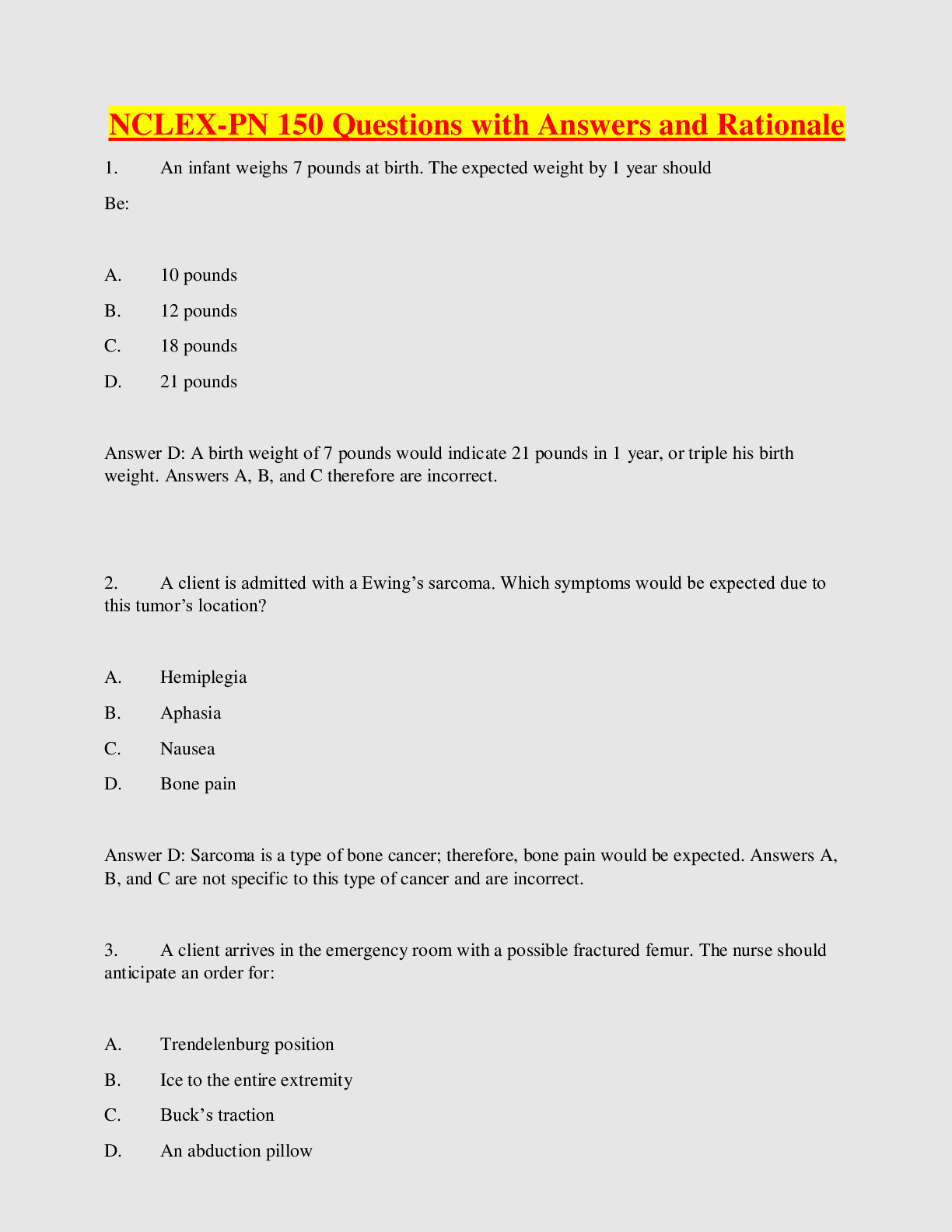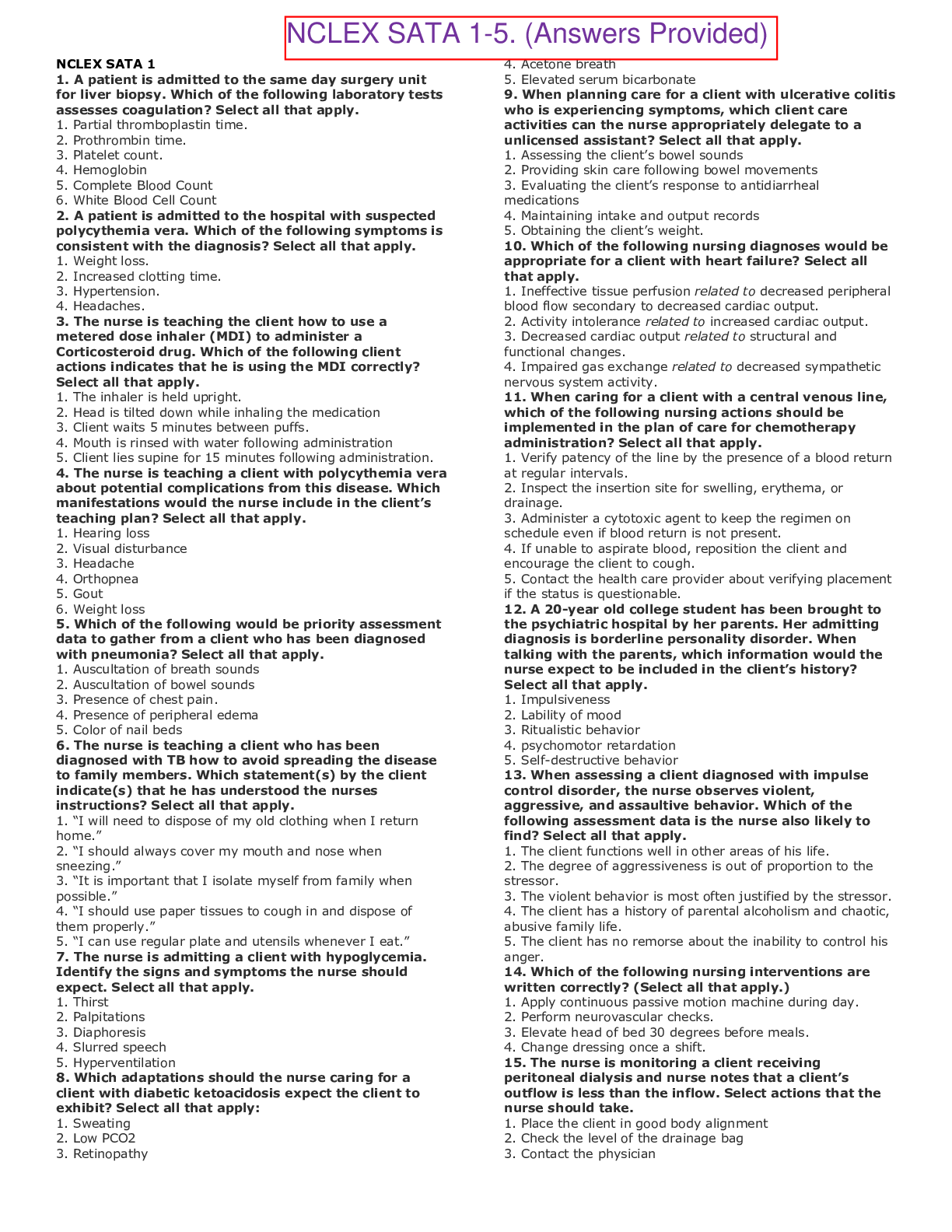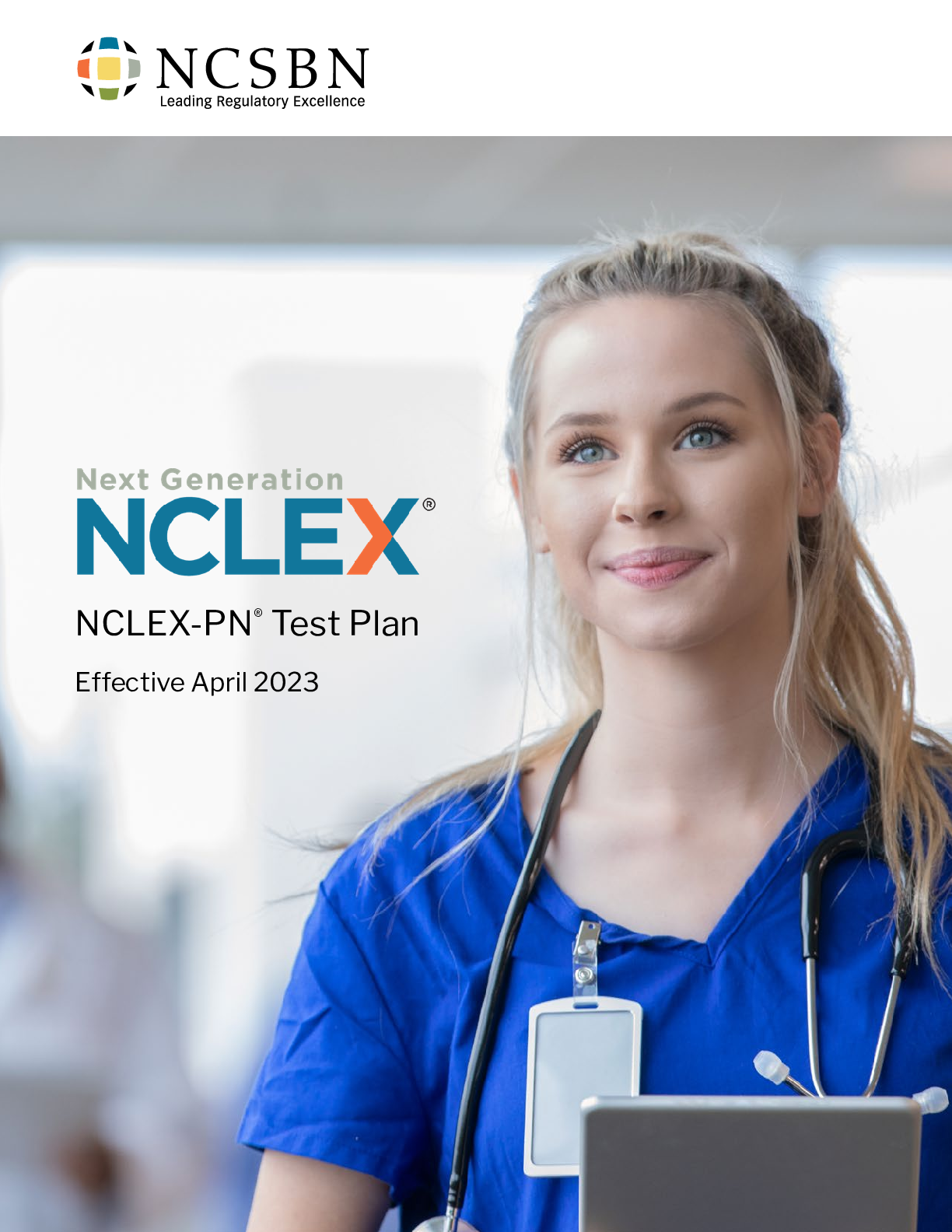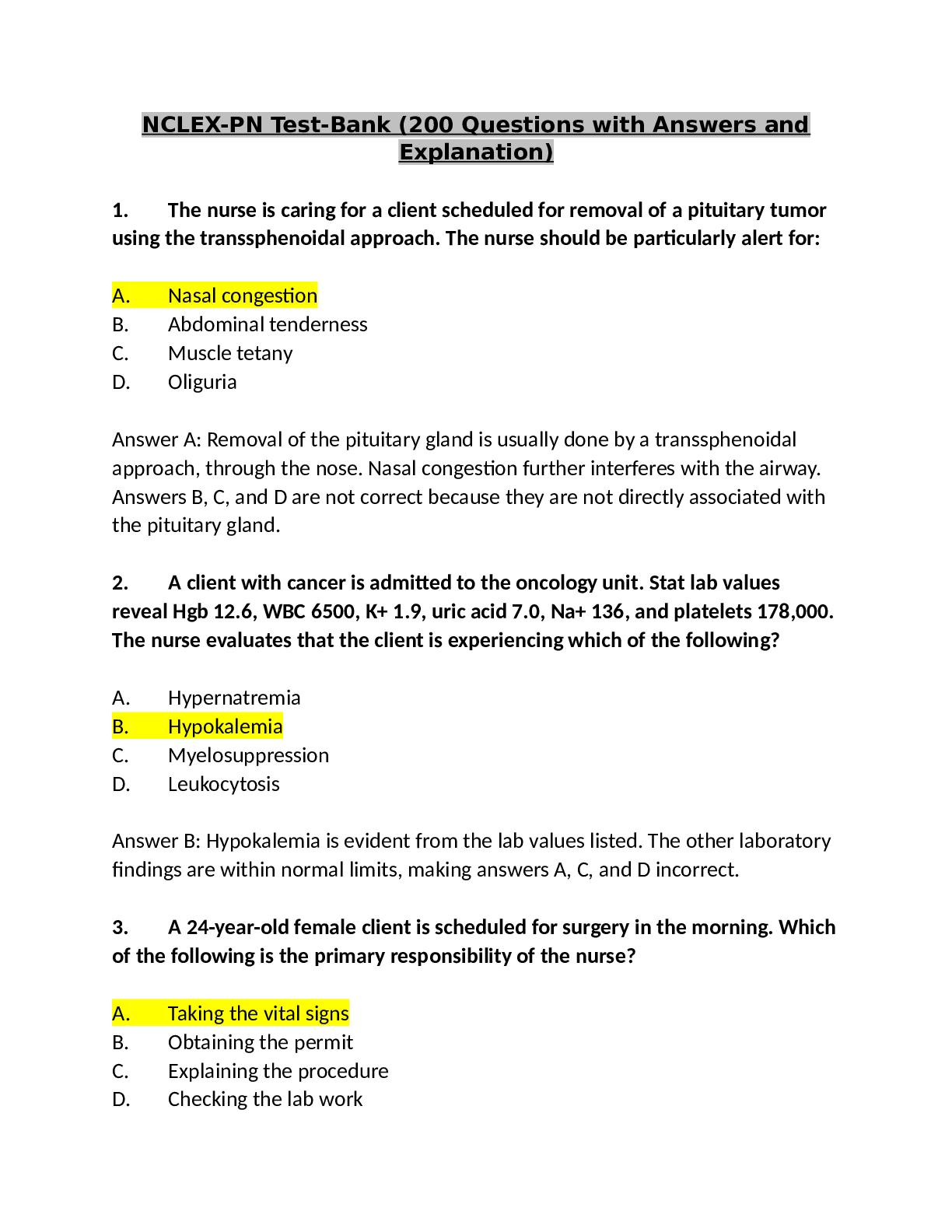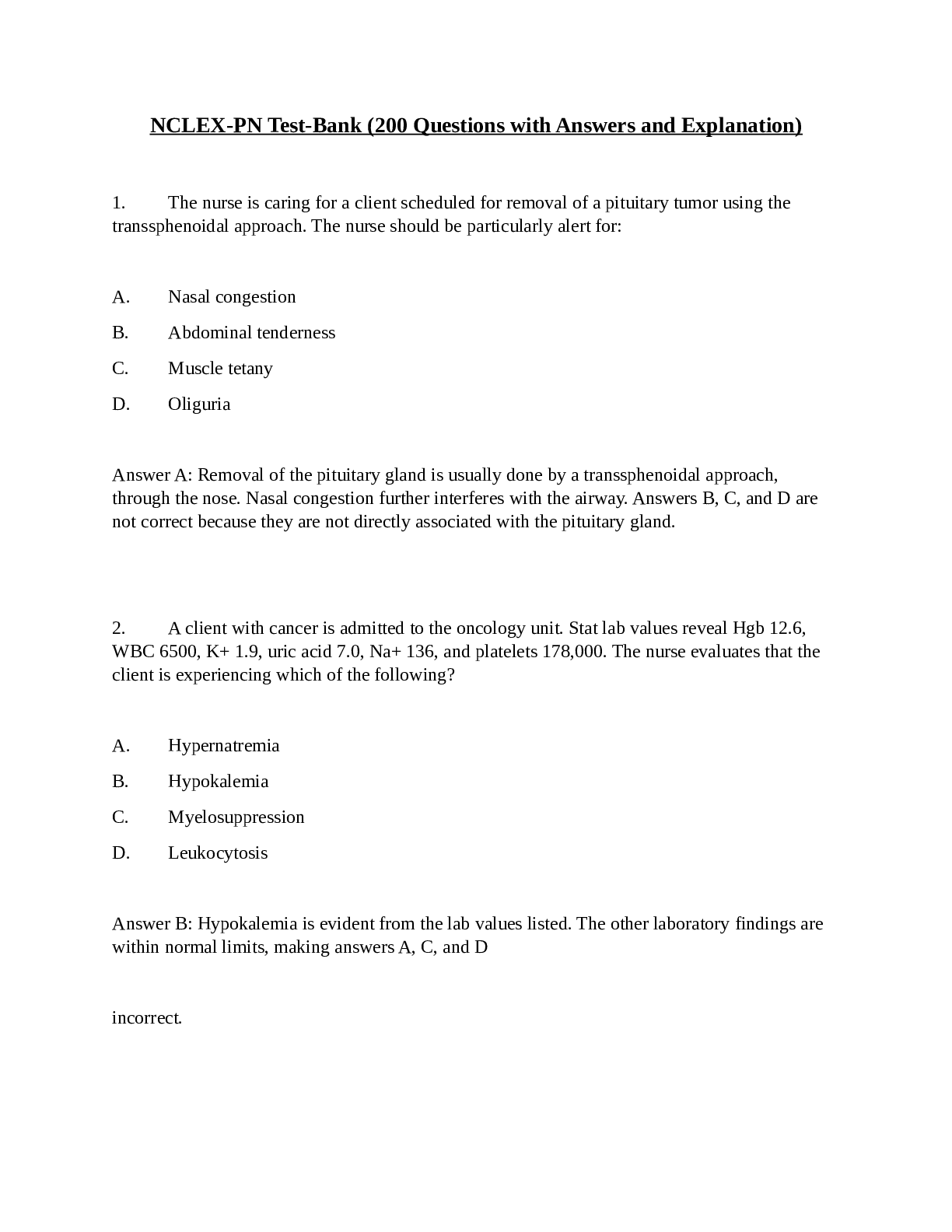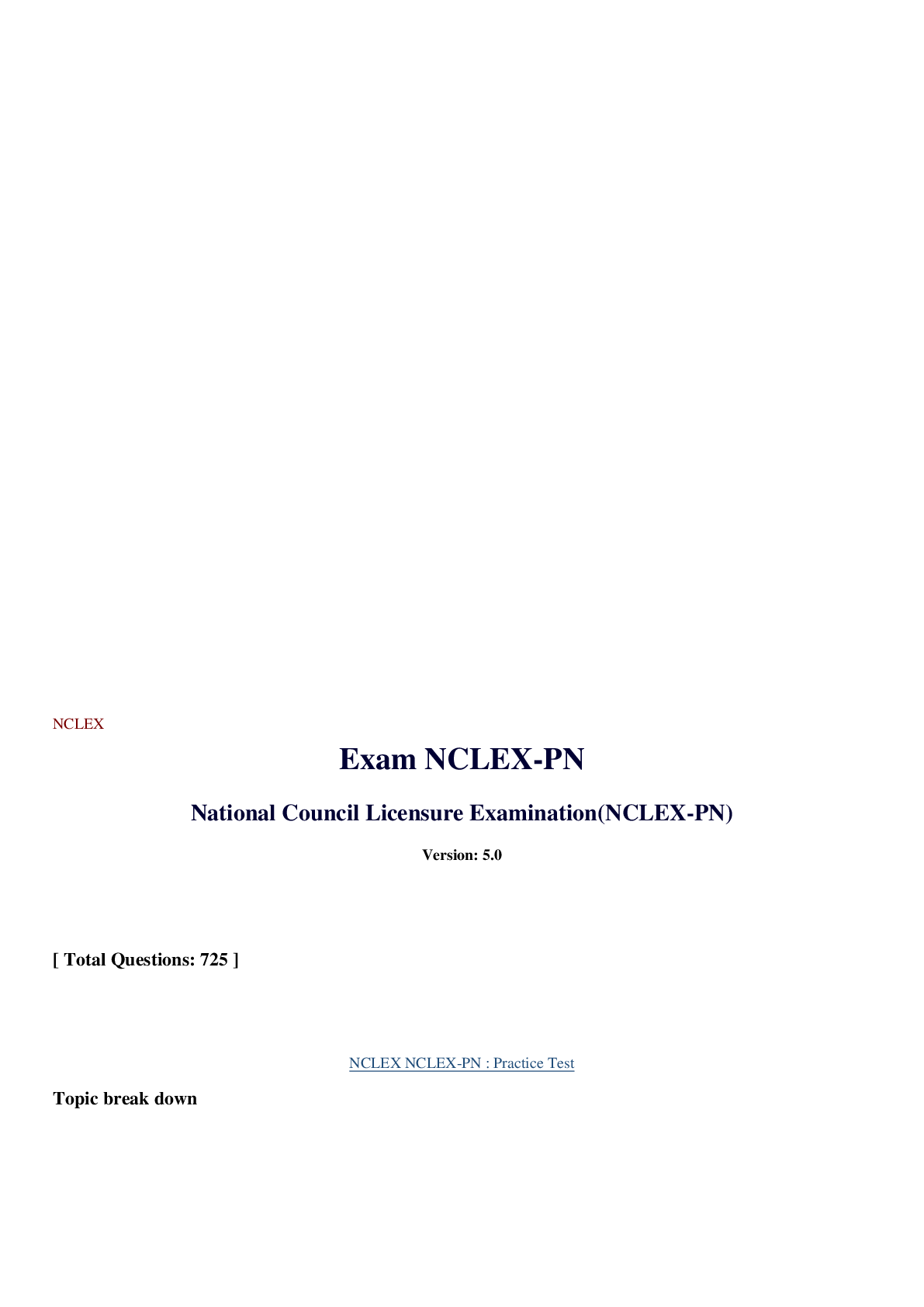Health Care > NCLEX-PN > NUR 322 PASSPOINT REVIEW NCLEX EXAM QUESTIONS AND ANSWERS 100% CORRECTLY/VERIFIED (All)
NUR 322 PASSPOINT REVIEW NCLEX EXAM QUESTIONS AND ANSWERS 100% CORRECTLY/VERIFIED
Document Content and Description Below
Question 1 See full question What is the nurse’s most important intervention for a client having a tonic-clonic seizure? You Selected: Protect the client from further injury Correct response... : Protect the client from further injury Explanation: The priority during and after a seizure is to protect the person from injury by keeping them from falling to the floor. Furniture or other objects that be a source of injury during the seizure should be moved out of the client’s way. Timing the seizure, and noting the origin of the seizure are important, but are not the priority. Nothing should be placed in the client’s mouth during a seizure because teeth may be dislodged or the tongue pushed back, further obstructing the airway. Remediation: Seizure management Question 2 See full question The nurse is caring for a neonate weighing 4,536 g (10 lb) who was born via cesarean section 1 hour ago to a mother with insulin-dependent diabetes. She asks the nurse, “Why is my baby in the neonatal intensive care unit?” The nurse bases a response on the understanding that neonates of mothers with diabetes commonly develop which condition? You Selected: hypoglycemia Correct response: hypoglycemia Explanation: Hypoglycemia is caused by the rapid depletion of glucose stores. In addition, neonates born to class women with insulin dependent diabetes are about seven times more likely to suffer from respiratory distress syndrome than neonates born to nondiabetic women. This neonate should be closely monitored for symptoms of hypoglycemia and respiratory distress. Neonates of diabetic mothers commonly have polycythemia, not anemia. Anemia and hemolytic disease are associated with erythroblastosis fetalis. Persistent pulmonary hypertension is associated with meconium aspiration syndrome. Remediation: Glucose management, neonatal Question 3 See full question After knee replacement surgery, a client is being discharged with acetaminophen with codeine 30 mg tablets for pain. During discharge preparation, the nurse should include which instruction? You Selected: "Avoid driving a car while taking this medication." Correct response: "Avoid driving a car while taking this medication." Explanation: Clients taking codeine should avoid driving because the medication can impair mental alertness. Fluid restriction isn't indicated, especially after surgery. To prevent adverse GI effects such as nausea, vomiting, anorexia, and constipation, the client shouldn't take codeine on an empty stomach. Codeine may cause dizziness, drowsiness, and seizures but doesn't cause fine motor tremors. Remediation: Codeine phosphate–acetaminophen Question 4 See full question The nurse manager has noticed a sharp increase in medication errors associated with IV antibiotic administration over the past 2 months. The nurse manager should discuss the situation with each nurse involved and then: You Selected: ask them to attend in-service training for administration of IV medications. Correct response: ask them to attend in-service training for administration of IV medications. Explanation: Identification of causes of medication errors requires in-service education to inform the staff of strategies to decrease these errors. Errors are frequently the result of systemic problems that can be identified and rectified through problem-solving techniques and changes in procedures. Documenting or reporting the situation would not directly assist the nurses in eliminating errors. Reporting the incidents to the hospital attorney is unnecessary. Remediation: Safe medication administration practices Question 5 See full question Clients receiving a monoamine oxidase inhibitor must avoid tyramine, a compound found in which foods? You Selected: Aged cheese and Chianti wine Correct response: Aged cheese and Chianti wine Explanation: Aged cheese and Chianti wine contain high concentrations of tyramine. Green, leafy or yellow vegetables, figs, cream cheese, and fruit are low in tyramine. Remediation: Tranylcypromine Question 6 See full question A client with a diagnosis of schizophrenia and who is paranoid asks the nurse, "How do I know what is really in those pills?" The best response is to: You Selected: allow the client to open the individual medication wrappers. Correct response: allow the client to open the individual medication wrappers. Explanation: Allowing a paranoid client to open his medication can help reduce his suspiciousness. Telling the client that he should know the pills are his medicine is incorrect because the client doesn't know this information for sure; he's obviously suspicious that it isn't. Telling the client not to worry or ignoring his comment isn't supportive and doesn't reassure him. Remediation: Oral drug administration, psychiatric patient Question 7 See full question When instilling erythromycin ointment into the eyes of a neonate 1 hour old, the nurse would explain to the parents that the medication is used to prevent which problem? You Selected: cataracts from beta-hemolytic streptococcus Correct response: blindness secondary to gonorrhea Explanation: The instillation of erythromycin into the neonate’s eyes provides prophylaxis for ophthalmia neonatorum, or neonatal blindness caused by gonorrhea in the mother. Erythromycin is also effective in the prevention of infection and conjunctivitis from Chlamydia trachomatis. The medication may result in redness of the neonate’s eyes, but this redness will eventually disappear. Erythromycin ointment is not effective in treating neonatal chorioretinitis from cytomegalovirus. No effective treatment is available for a mother with cytomegalovirus. Erythromycin ointment is not effective in preventing cataracts. Additionally, neonatal infection with beta-hemolytic streptococcus results in pneumonia, bacterial meningitis, or death. Cataracts in the neonate may be congenital or may result from maternal exposure to rubella. Erythromycin ointment is also not effective for preventing and treating strabismus (crossed eyes). Infants may exhibit intermittent strabismus until 6 months of age. Remediation: Neonatal eye prophylaxis [Show More]
Last updated: 1 year ago
Preview 1 out of 193 pages
 (1).png)
Reviews( 0 )
Document information
Connected school, study & course
About the document
Uploaded On
Jan 11, 2023
Number of pages
193
Written in
Additional information
This document has been written for:
Uploaded
Jan 11, 2023
Downloads
0
Views
65

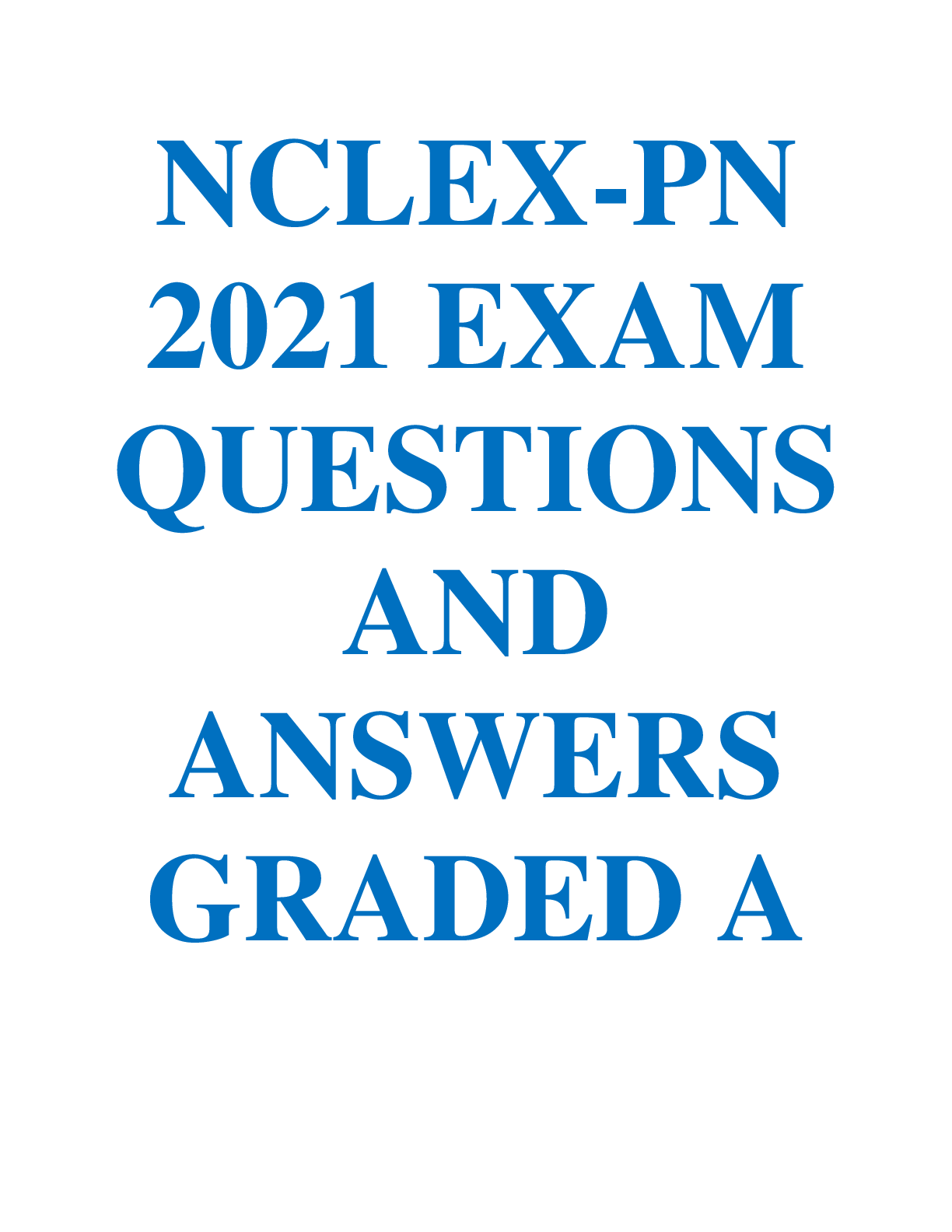

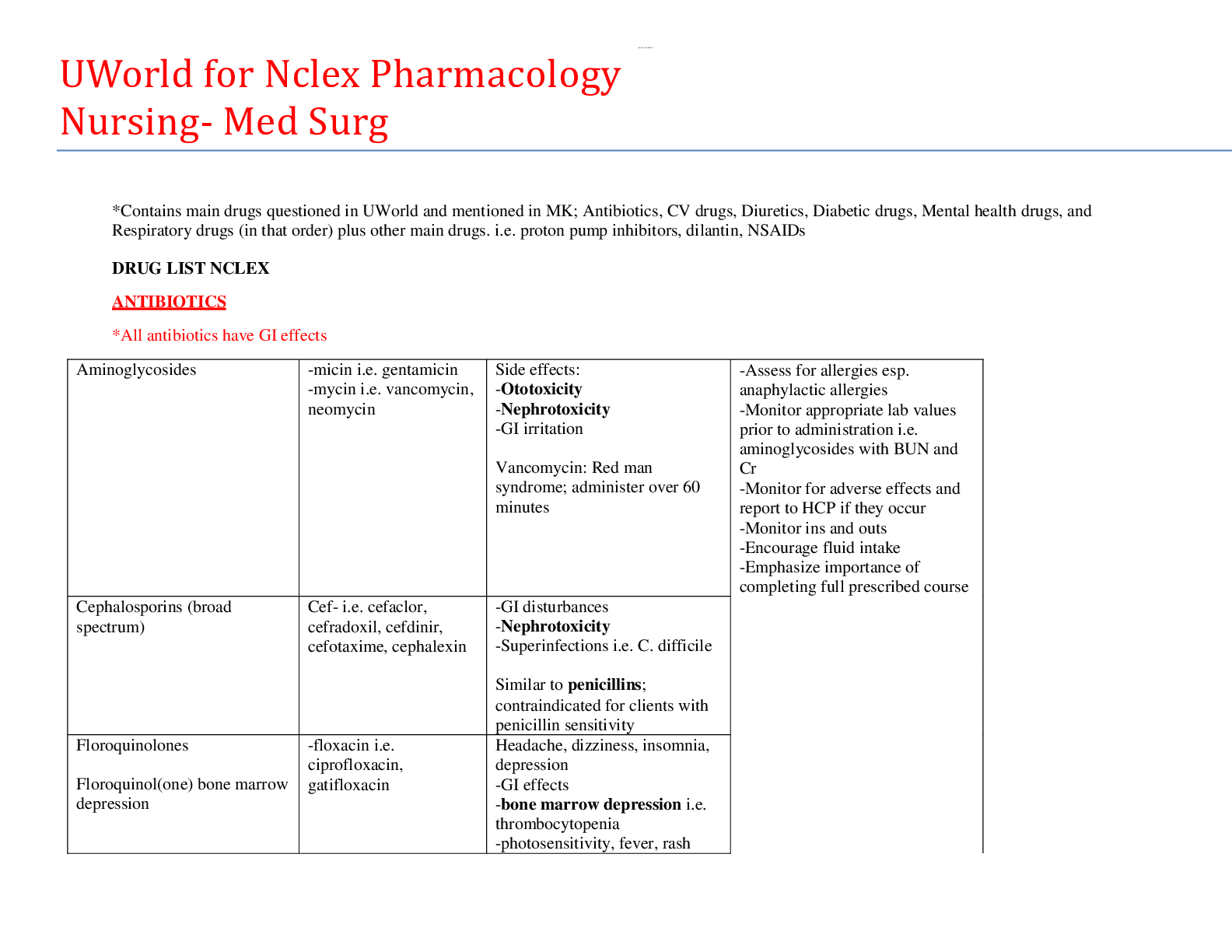

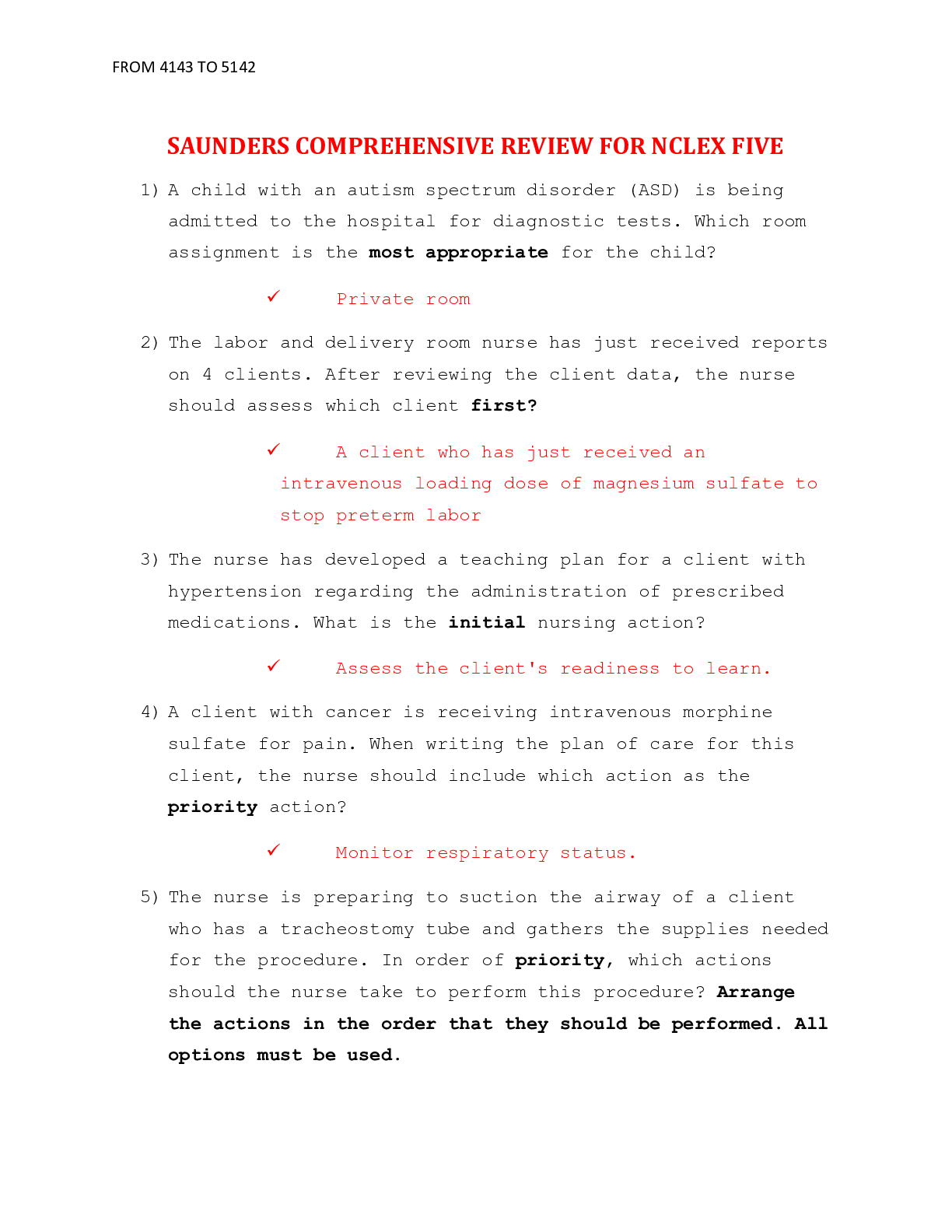
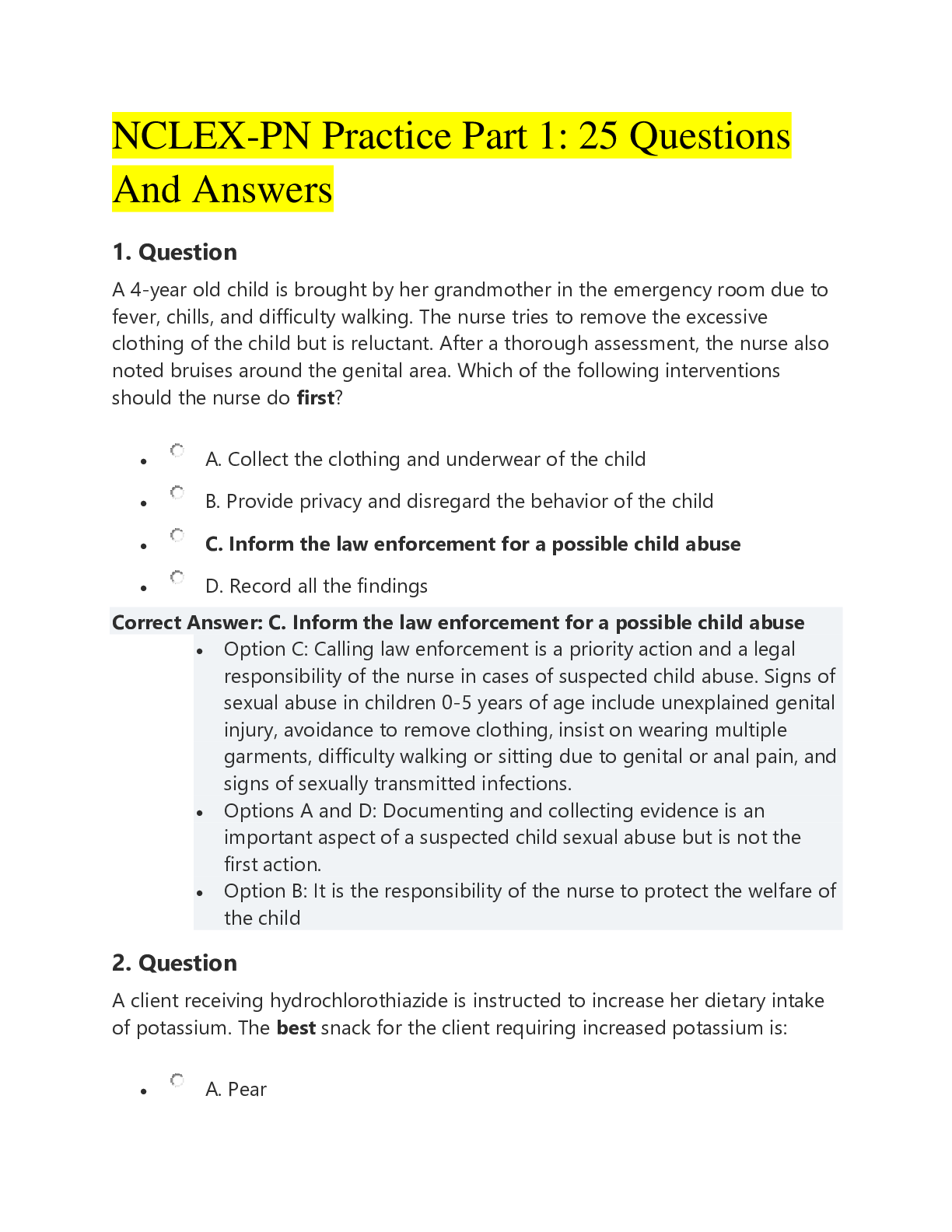
.png)
